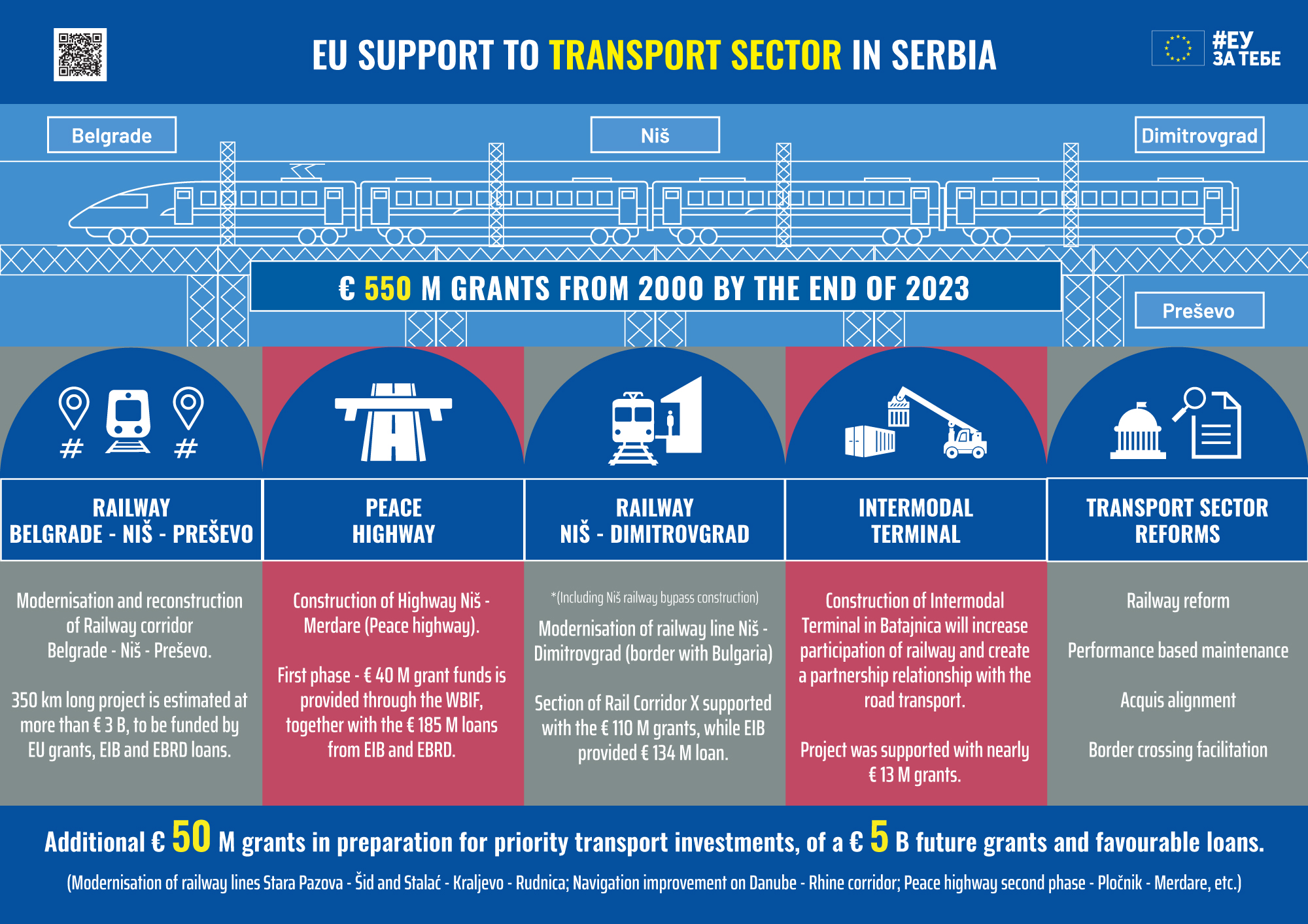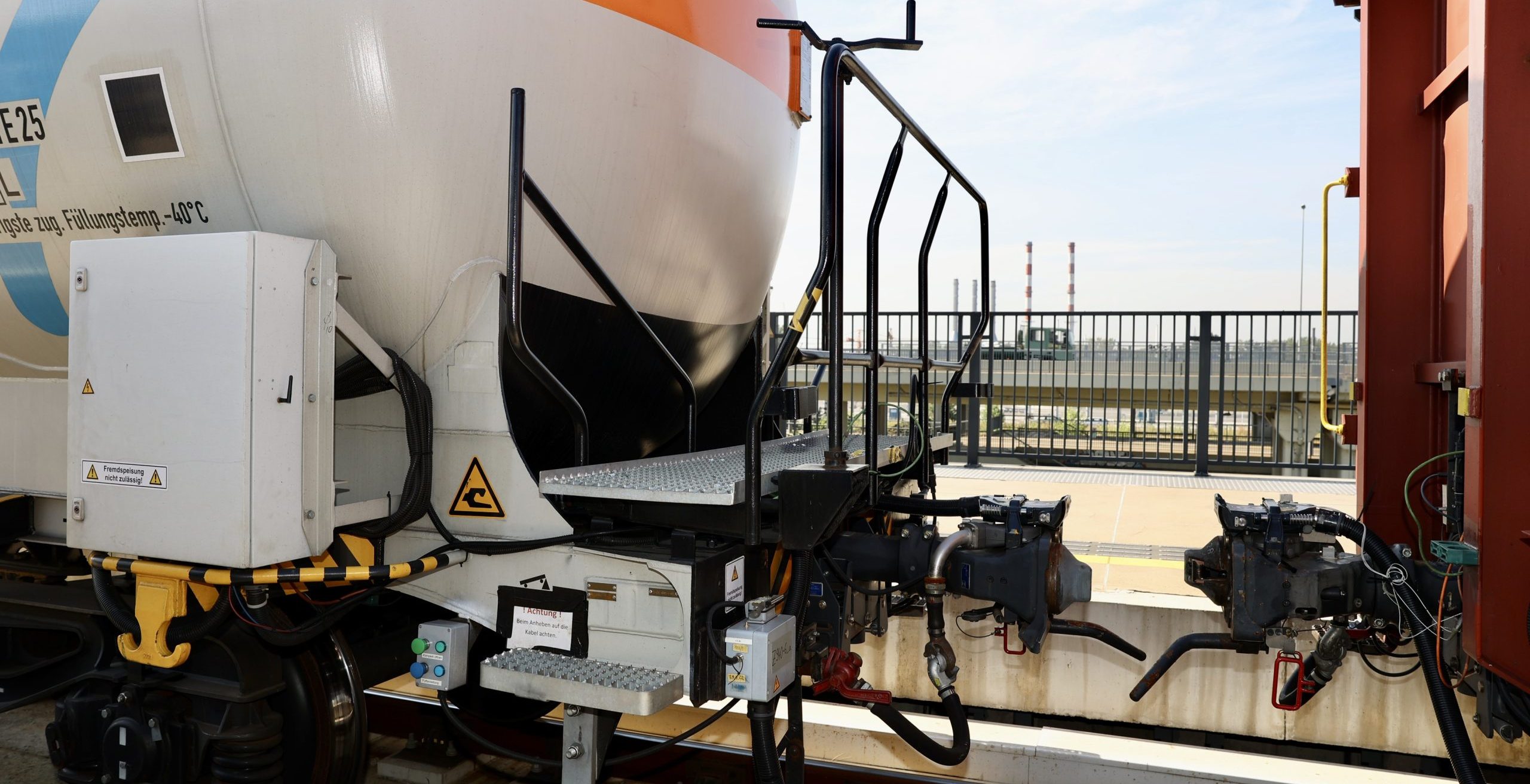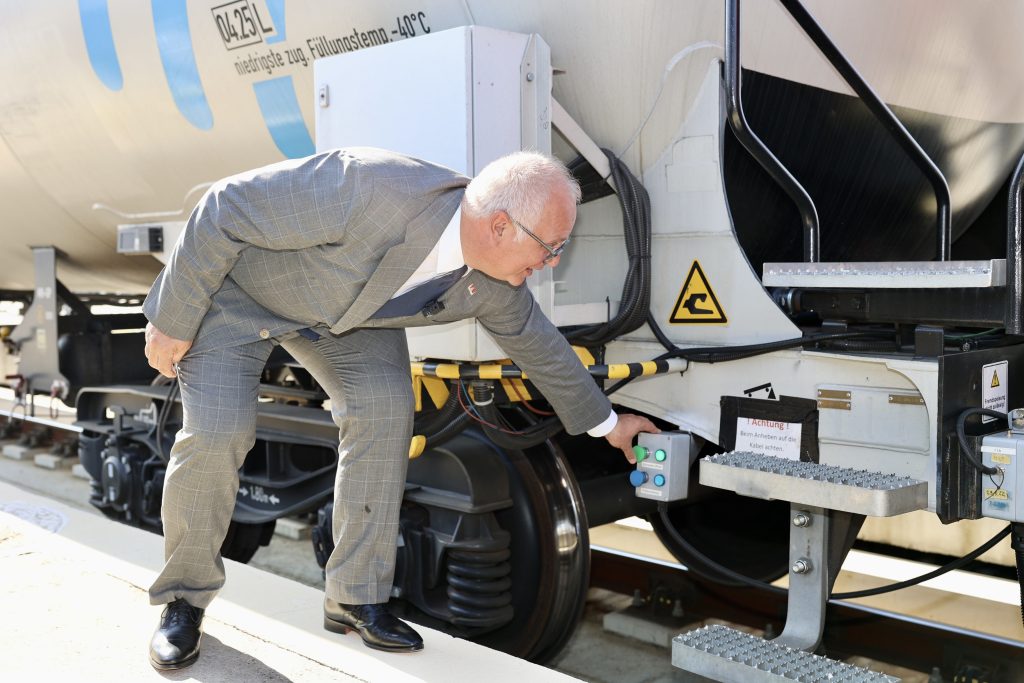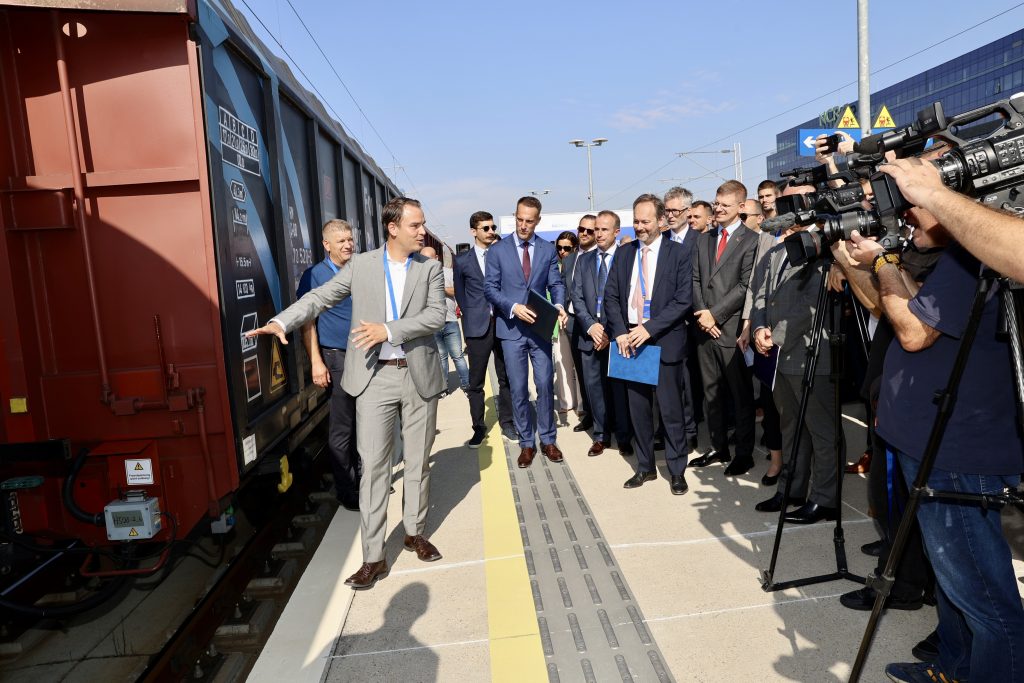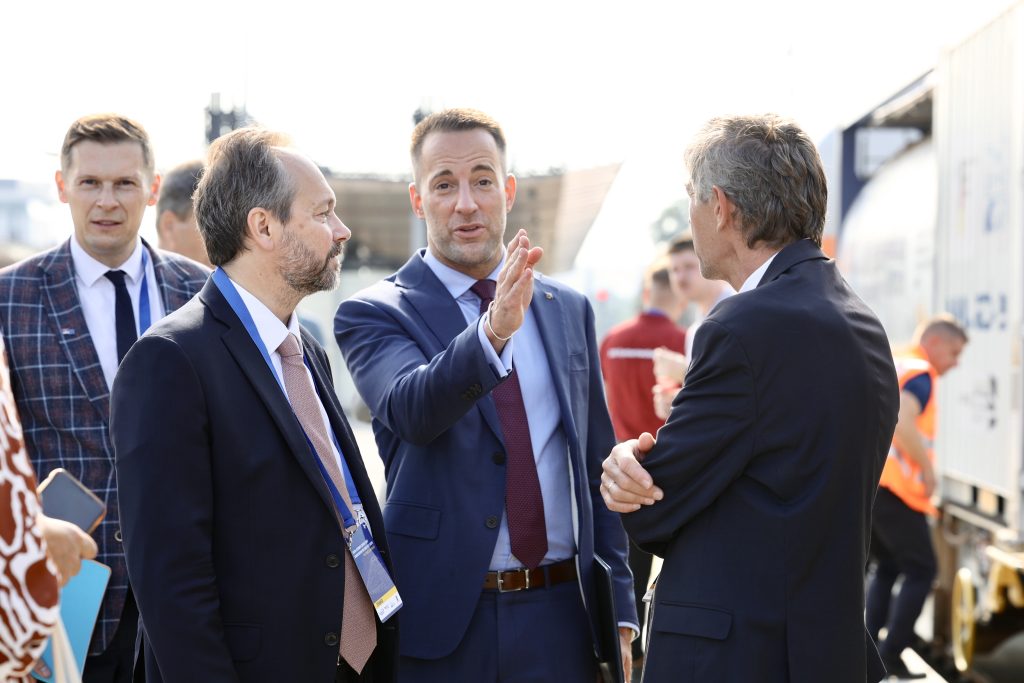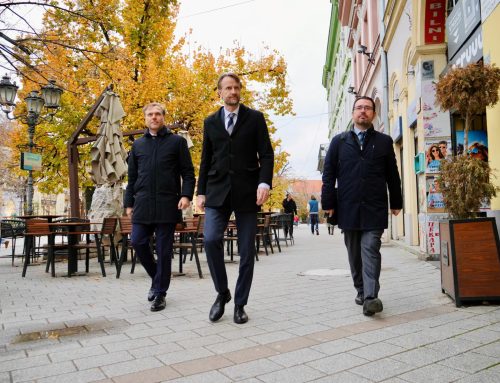Serbian Railways will be the fifth in the world to use the most modern digital automatic coupling (DAC). The demonstration of this technology took place on Thursday, September 14, at the Novi Beograd Railway Station, and on that occasion the Ambassador of the European Union to Serbia Emanuele Giaufret, the Ambassador of Germany Anke Konrad, the Minister of Construction, Transport and Infrastructure Goran Vesić and the Director of the European organization Transport Community Matej Zakonjšek.
Digital Automatic Coupling is changing rail freight traffic for the better, improving it with its innovative approach to coupling and uncoupling rail vehicles, thereby increasing safety, efficiency and sustainability of the railway system. Everything that was done manually until now will be done by pressing one button.
EU Ambassador to Serbia Emaneuele Giaufret emphasized that this state-of-the-art technology will improve the capacity, productivity and efficiency of rail freight transport, and this will make the transport of goods by rail faster, cheaper, safer and overall more efficient and competitive.
“Therefore, it is clear why this project is important for efficiency and safety, but it’s also part of the EU’s investment in the green agenda and let me tell you – the EU is on the fast track in this area, with a train of investment towards a zero-emission environment. By investing in cleaner transport and investing in technology and innovation in Serbia, we are investing in the quality of life, safety and economic efficiency of people”, Ambassador Giaufret said.
The EU Ambassador noted that switching freight traffic from road to rail is sustainable and environmentally friendly transport of goods in the region. This will reduce gas emissions in accordance with the goals of the Green Deal, the Green Agenda for the Western Balkans and the Smart and Sustainable Transport Strategy.
“The European Union is an important partner for all parties to the Treaty of Transport Community. In the accession context, the exchange of experiences and best practices among experts from both sides is very important for understanding and enabling the changes needed for the sustainable development of the railway sector in the region”, emphasized Ambassador Emanuele Giaufret.
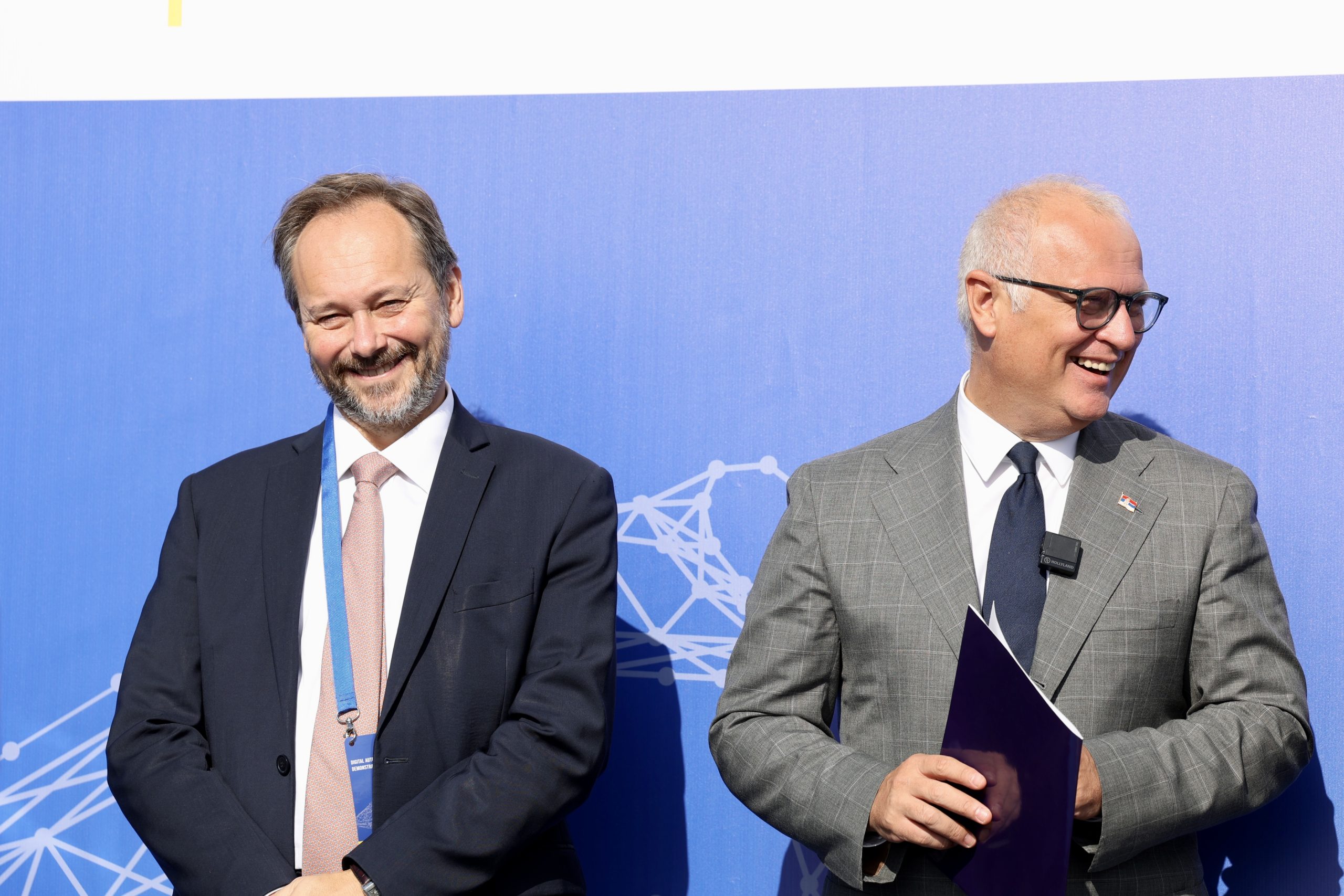
German Ambassador Anke Konrad pointed out that the German Federal Ministry for Digitizatoin and Transport has allocated more than EUR 20 million from 2020 for DAC technology research.
“The plan was to equip half a million freight cars with this digital coupling by 2030, the benefit of which is obvious – increased efficiency of rail transport and more use of this mode of transport”, the German Ambassador emphasized.
With the high-speed rail connection between Belgrade and Budapest, the transport of goods by train will gain importance in Serbia, which is why it is important to use the DAC, which is an important part of the puzzle in the integration of Serbia into the European Union, said Ambassador Konrad.
Minister Goran Vesić emphasized that this technology is important on Serbia’s European path and pointed out that the EU will invest more in railway transport.
“We are trying to be a part of those efforts and to make our railways better and more advanced, and with the construction and reconstruction of railways thanks to the funds of the European union, we can do that”, said Minister Vesić.
“We recognize that the DAC system not only improves safety and efficiency, but also promotes economic growth, environmental sustainability and cross-border connectivity. It has the potential to unlock new opportunities for trade, improve regional cooperation and reduce the carbon footprint of our transport networks”, said the Director of the Transport Community Matej Zakonjšek.
The first demonstration of this technology in Eastern Europe was organized by the Transport Community in cooperation with the DAC4EU project and the Ministry of Construction, Transport and Infrastructure, a continuation of the Rail Innovation Workshop in Niš in 2022. It brought together freight operators, wagon guards, industry experts, researchers and rail innovators to find the latest ways to develop digital automatic couplers.
This project is the product of close and fruitful cooperation between Germany through the DAC4EU project and the European Commission’s Shift2Rail initiative, the European programme for cooperation in technology, research and development jointly funded by its members and Horizon 2020, the European Commission’s research fund.
Demonstration of the DAC system
